I went on my first long-distance van trip. These were the 6 best and 7 worst parts of the 10-day adventure.
Ashley Probst

- I tried out van life for the first time during a 10-day road trip in a Mercedes Sprinter van.
- Traveling by van allowed my friend and I to save money on hotels and make stops along the route.
My friend and I spent 10 days traveling along the Oregon Coast in a Mercedes Sprinter van.
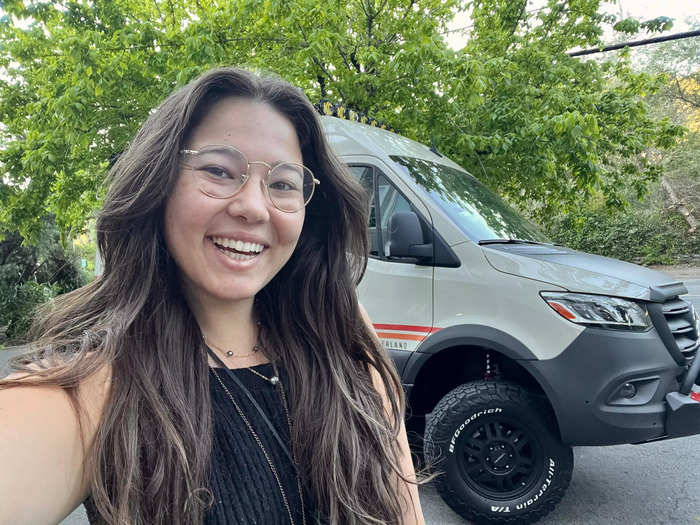
As an avid solo traveler, I'm always open to having new experiences.
When a friend asked me to take their parents' 2022 Mercedes-Benz Beast MODE 4x4 Sprinter van on its maiden voyage from San Francisco to Portland and back down the Oregon Coast, I was ecstatic and accepted the offer.
We drove over 10 hours from San Francisco to Portland in a little more than a day, making pit stops at Mount Shasta and Crater Lake National Park. We spent most of our time in Portland and eventually drove down the Oregon Coast, visiting Humboldt County in California before completing our loop.
Here were the major highs and lows of my first van trip, and why I'll try out this type of travel alone next time.
The van belonged to my friend's parents, so we didn't have to shell out money on a rental.
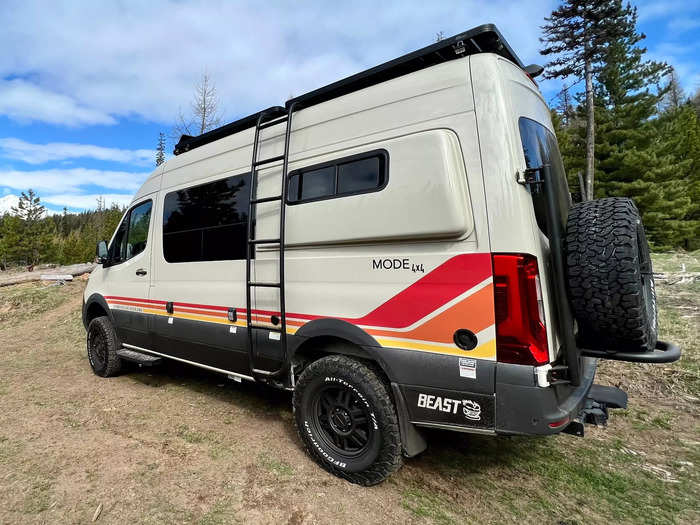
I'm grateful that my travel partner's parents allowed us to borrow their Sprinter van.
The Mercedes-Benz Beast MODE 4x4 retails at about $200,000, and renting it would've cost at least $200 per night. Having free access to this vehicle made the trip possible.
We were also lucky to be able to park at loved ones' homes along the route, which helped cut down on nightly fees at RV parks and other campsites.
I was able to work remotely and even attended a professional event on the road.
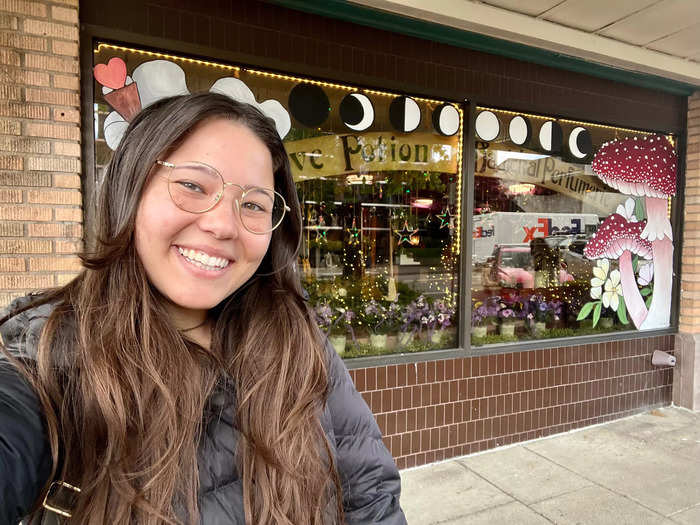
Though I was worried about my ability to work on the road, I had a productive workflow.
While my travel partner drove, I used a hot spot to work on writing assignments. It was convenient, and I wouldn't have been able to get as much done if I was traveling alone and had to drive the entire time.
When we were planning our trip, my travel partner suggested that I do in-person tarot readings along the way. I connected with a few shop owners to inquire about hosting pop-up events and accepted an opportunity to be a tarot reader at a psychic fair in Vancouver, Washington.
We chose Portland as our destination so I could take the job, which brought me valuable networking opportunities and profits. It made me feel secure after taking off work to go on the trip and showed me that I could find business on the road.
Living out of the van granted us the freedom to stop in various places.
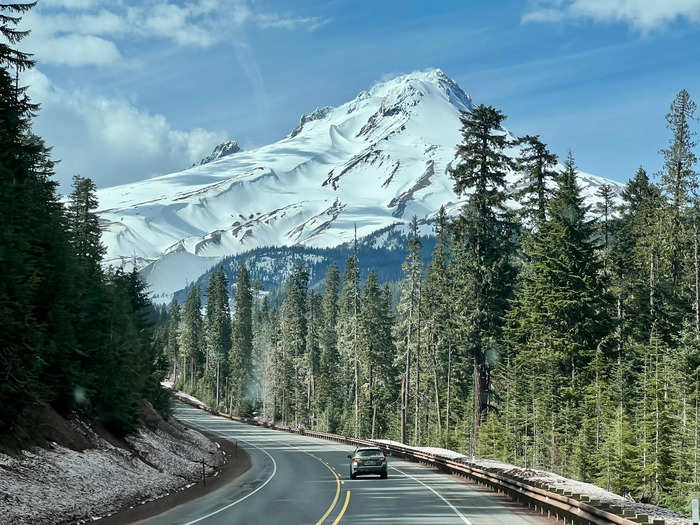
Our trip took us to Mount Shasta, Crater Lake National Park, Vancouver, Portland, Mount Hood, the Oregon Coast, and various cities in Humboldt County.
We stayed in RV parks and on loved ones' properties, but the van itself was our home base. On some mornings, we woke up in the city, and on others, we started the day on the beach or in the forest.
The experience was very in line with my travel style.
The food we made in the van was delicious, and cooking saved us a lot of money.

Bringing groceries and cooking in the van helped us save money on food. The meals I enjoyed most were all homemade, and we prepared them using a portable battery and a hot plate.
We also went out to eat at various restaurants along our route. One of my favorite dishes was a crab mac and cheese that I indulged in while admiring the harbor in Newport, Oregon.
Traveling with a dog wasn't as difficult as I thought it would be.
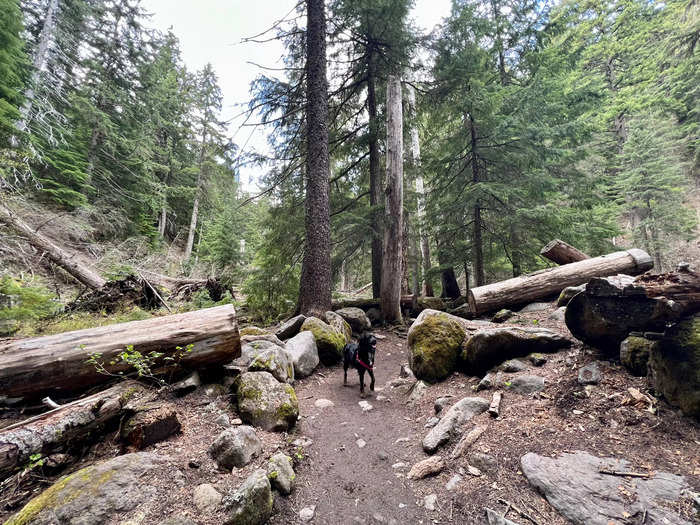
My friend's dog had never traveled in a van for an extended period of time before, so we weren't sure how she'd behave.
Our canine companion certainly didn't enjoy being in the van, but she was very quiet while we were on the road.
Whenever we stopped, she was eager to get out and play but refused to get back in the vehicle unless we carried her inside. We made sure to stop at a few dog parks, which gave us a little break from driving, too.
We had pleasant experiences at the RV parks where we stayed.
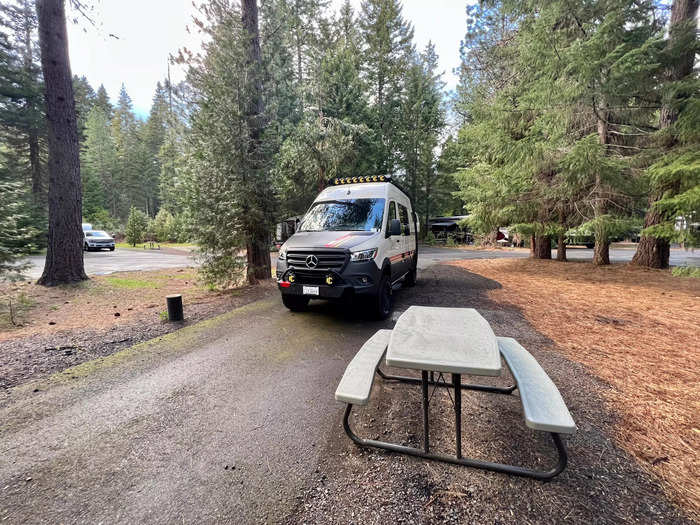
Even though we called the RV parks to make reservations at the last minute, we found it easy to book spaces.
We also landed on some exceptional spots, such as Seal Rocks RV Cove, which is within walking distance of a beach.
We spent about $40 per night at each RV site, which was affordable considering they also gave us access to toilets, showers, and electric and water hookups.
When it comes to the trip's downsides, I didn't love having to make so many compromises.
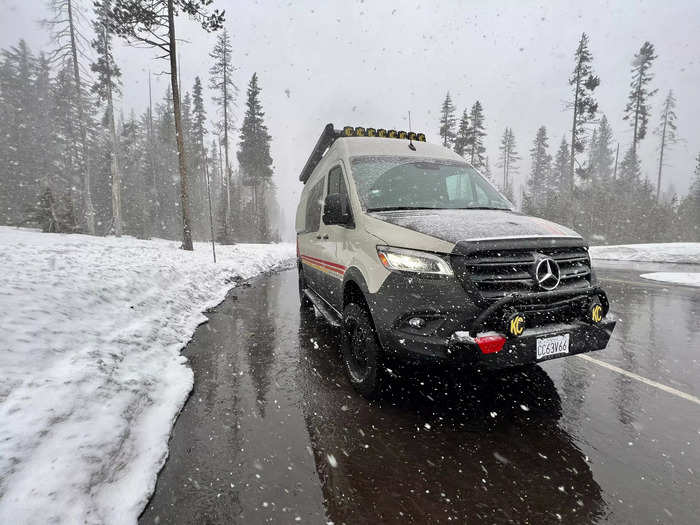
My friend and I needed to work out a lot of logistics before we could make this trip happen.
For example, the proposed travel dates were during one of my busy work periods. Going meant I'd miss out on a lot of opportunities to do in-person tarot readings.
However, I agreed to take the trip as long as we tracked our spending and had access to Wi-Fi so I could work remotely.
I also made a compromise with my travel partner and declined a couple of work opportunities so we could see Crater Lake and go to Sonoma, as they wanted to fit in both stops. Unfortunately, neither visit ended up panning out.
The van had some complications, and we couldn't use the shower or sink.
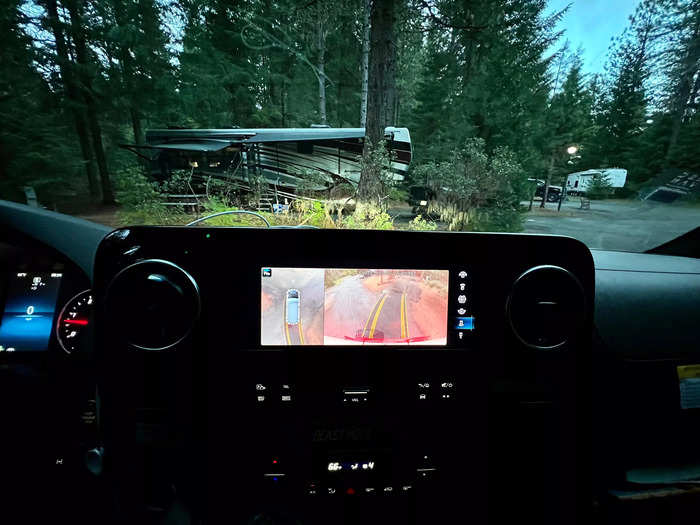
A few days before our trip, the van had an electrical issue, and we weren't sure if we'd be able to take it out at all. Thankfully, we worked around it and moved forward as planned.
But before hitting the road, my travel partner asked me to read the user guide to understand the van's intricate systems. She said we needed to be cautious when using the outlets, microwave, and hot plate to ensure we didn't accidentally short-circuit the vehicle.
It didn't end up being a problem. We brought a portable battery to power the kitchen appliances and charge our phones and laptops.
We also thought we'd need to park in places with electric and water hookups to recharge the van and refill the water tanks.
As it turns out, the van charged while we drove. We also didn't worry about a water hookup, as the van's sink and built-in shower needed maintenance and weren't usable during our trip.
Instead, we relied on the facilities at campsites and friends' homes.
Keeping the van clean was a challenge, and I spent a lot of time organizing our things.
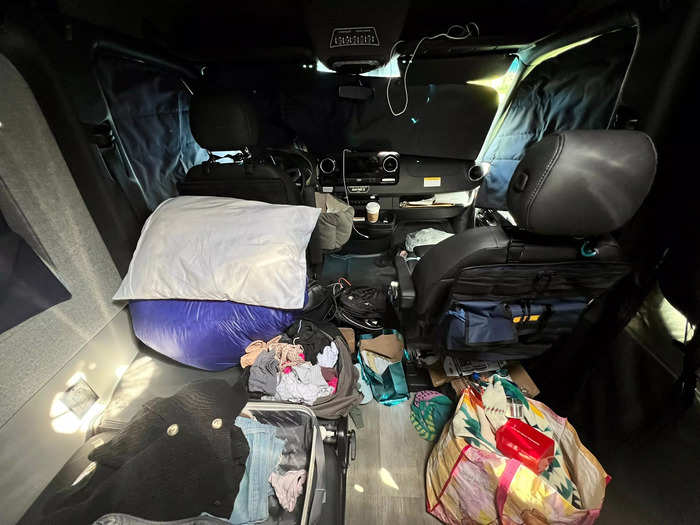
The morning of our departure was hectic, and we strewed our bags in the back of the van. I spent a lot of the first day (and the next nine) putting things away, securing drawers and cabinets, and keeping our belongings organized.
The small space accumulated clutter quickly, so it constantly had to be maintained. I didn't mind cleaning the van, but I would've preferred to only pick up after myself, which is one of the reasons I typically travel alone.
My clothing wasn't weather-appropriate, but I made do with what I had.
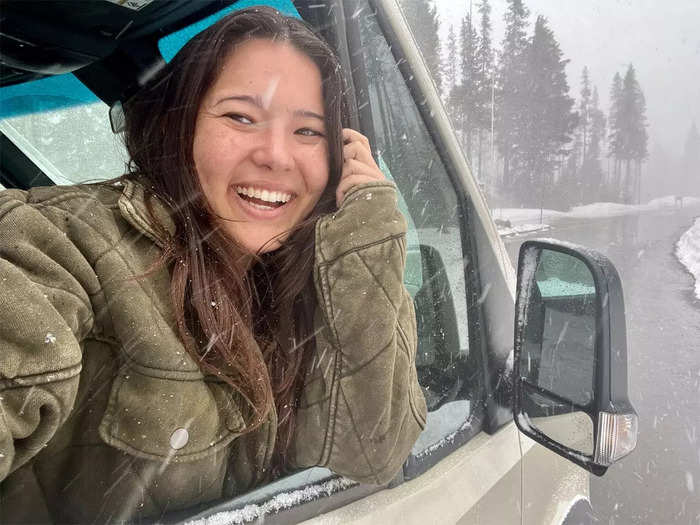
This adventure was a vastly different experience than my last road trip, during which I packed my car with outfits and gear for every season.
On this journey, I didn't have space in my luggage for bulky items, like a heavy coat or hiking boots, even though they would've been useful during our time in the mountains.
My travel partner offered to let me borrow some of her things but, at the end of the trip, I was proud to have only used my own clothing.
It also helped that I snagged a pair of hiking shoes from a box of free items I found in Portland.
My friend and I never figured out the sleeping arrangements.

Throughout the trip, I tried every sleeping arrangement possible.
On the first night, I slept in the reclined passenger seat because my travel partner fell asleep in the main bed before we set up the convertible sofa bed. I didn't want to wake them or scoot them over to make room.
The next night, we figured out how to set up the sofa bed, where I slept. The van's heating system kept my back warm during the night, and I enjoyed the regulated temperature.
On the third night, we swapped places and I slept in the main bed while my travel partner slept on the sofa bed with her dog. She liked the main bed and I preferred the sofa bed, so we agreed to swap back for the rest of the trip.
She got too warm at night and requested that we stop using the heater and open more windows. I tried to adjust by slipping into sleeping bags and covering myself with blankets but always ended up either freezing or sweating.
I kept thinking about how I could've kept the cabin at whatever temperature I wanted if I was traveling alone.
Gas prices were astronomically high, but fuel was an unavoidable expense.
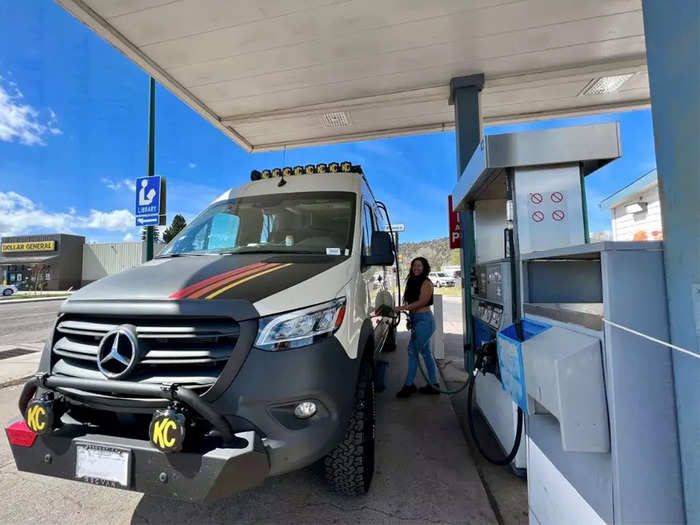
The van took diesel, and we easily spent $100 every time we stopped to fill our tank halfway.
I saved a bit of money thanks to an agreement with my partner that I'd give her tarot readings if she chipped in a bit more for gas.
Though fuel was expensive, the overall cost was ultimately cheaper than it would've been to pay for more traditional accommodations, like hotels or Airbnbs.
Being in such close proximity for 10 days put our friendship to the test.
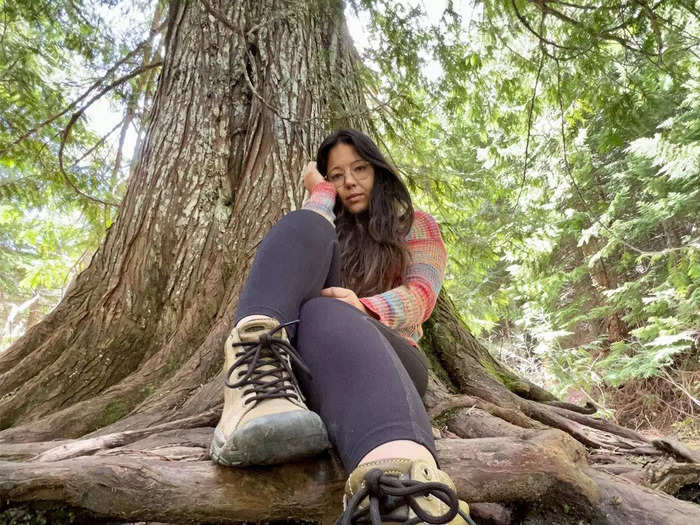
Traveling with another person can be challenging.
Seemingly minuscule differences — like enjoying different activities, operating on different schedules, having different ideas of cleanliness, and sleeping in different temperatures — can turn into bigger conflicts.
For the most part, my travel partner and I were able to compromise, but we were both transmuting feelings of resentment, which we addressed halfway through the trip.
It's also inherently difficult being in close quarters with someone else for a long period of time, and trips like this one put friendships and relationships to the test.
My first van-life experience had its low points, but I enjoyed it and would love to travel this way alone in the future.
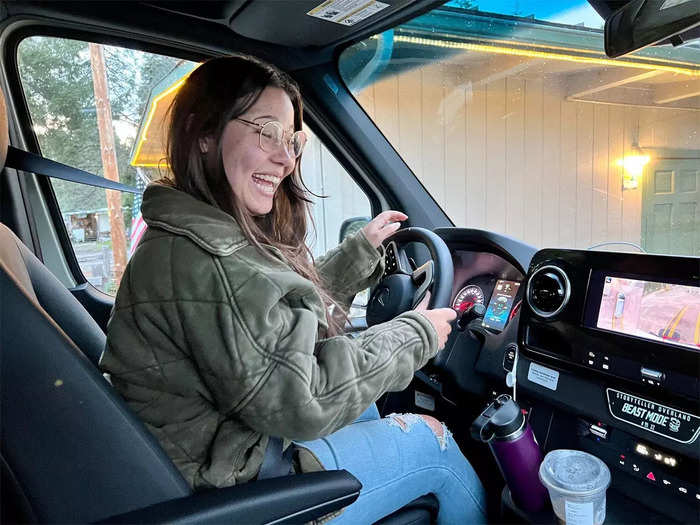
Since returning from my trip, I've become increasingly interested in procuring a camper van so I can embark on a solo adventure.
My preference has always been to travel alone, as it allows me to cater each experience to my needs and desires. The journey becomes easier when I don't need to compromise, and I enjoy my own company.
I have yet to decide if I'll rent a vehicle for a short trip or buy a van to live in for a longer period of time. The possibilities are endless, and I'm excited to see how these ideas take form.
Popular Right Now
Popular Keywords
Advertisement